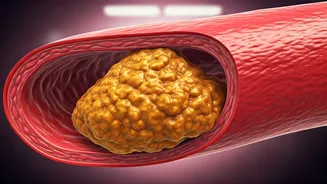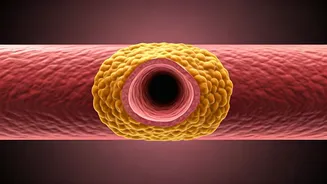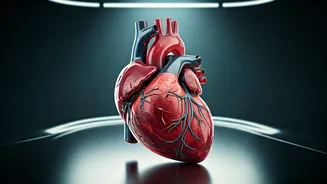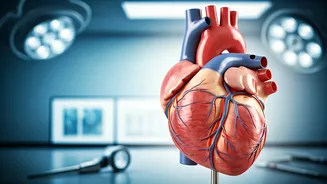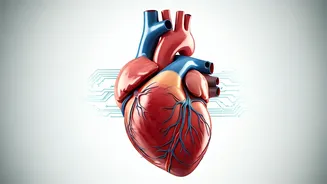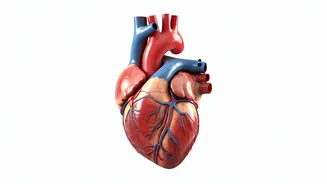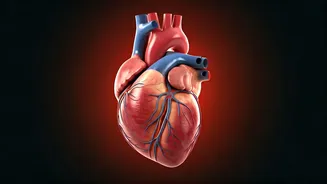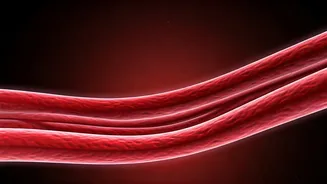Plaque: The Basics
Artery plaques, often associated with heart issues, are primarily formed through a process called atherosclerosis. These plaques begin as deposits within
the walls of arteries. Initially, these deposits may include cholesterol, fats, and calcium, leading to the thickening and stiffening of the arteries. Over time, the composition can evolve to include cellular waste products, other substances, and fibrous tissue. This buildup narrows the arteries, restricting blood flow. This reduced blood flow can deprive organs and tissues of the oxygen and nutrients they need, which may lead to significant health complications. Consequently, recognizing the causes and processes related to plaque formation is crucial for taking proactive steps towards heart health.
What Makes Plaque?
Artery plaques aren't just one thing; they're made up of a combination of elements. Cholesterol, particularly LDL cholesterol, often called "bad" cholesterol, plays a significant role. It's one of the primary components that initiates plaque formation. Fats and other fatty substances also contribute to the buildup. As the plaque grows, it can trap calcium, leading to hardening and thickening. Other components such as cellular waste products, and fibrous tissues become integrated into the growing plaque. The exact composition and proportion of these substances can vary among individuals and can be influenced by diet, lifestyle, and genetics. Therefore, managing these factors can considerably impact the composition and development of arterial plaques.
Risks of Buildup
The presence of artery plaques can lead to several severe health problems. One of the most significant risks is reduced blood flow to the heart, potentially resulting in angina, which is chest pain or discomfort. Plaque buildup also increases the likelihood of a heart attack. If a plaque ruptures, it can trigger a blood clot that blocks the artery, abruptly stopping blood flow to the heart muscle. Plaques can also cause strokes if they block arteries supplying blood to the brain. Furthermore, peripheral artery disease (PAD) can occur, reducing blood flow to the limbs, causing pain and increasing the risk of infection and, in severe cases, amputation. Thus, recognizing and addressing plaque buildup is vital for preventing life-threatening conditions.
Prevention Strategies
There are several steps you can take to prevent the formation of artery plaques. Diet plays a crucial role; focus on foods low in saturated and trans fats, and incorporate plenty of fruits, vegetables, and whole grains. Regular exercise helps maintain healthy cholesterol levels and promotes cardiovascular fitness. Managing your weight is also essential, as excess weight can increase your risk of heart disease. Avoiding smoking is critical, as smoking damages blood vessels and accelerates plaque buildup. Controlling blood pressure and managing conditions like diabetes are also vital. Regular check-ups with a healthcare provider can help monitor your heart health and identify any issues early, allowing for timely intervention and treatment.
Reversing the Damage
While preventing plaque formation is ideal, there are also measures to manage existing plaques and potentially reverse some of the damage. Lifestyle changes form the foundation of any treatment plan. A heart-healthy diet and regular exercise are essential. Medications, such as statins, are often prescribed to lower cholesterol levels. In some cases, medical procedures like angioplasty or bypass surgery may be necessary to open blocked arteries and restore blood flow. The specific approach will depend on the severity of the plaque buildup and the overall health of the individual. Working closely with healthcare professionals to develop a personalized plan is essential for effective treatment.
